How a road‐trip vlog raised +$11M and what creators can learn from it
AND why the mechanics of this series can matter to faith-driven creators.
Hey, it’s Payton.
And we need to talk about what Ryan Trahan is doing right now 👇
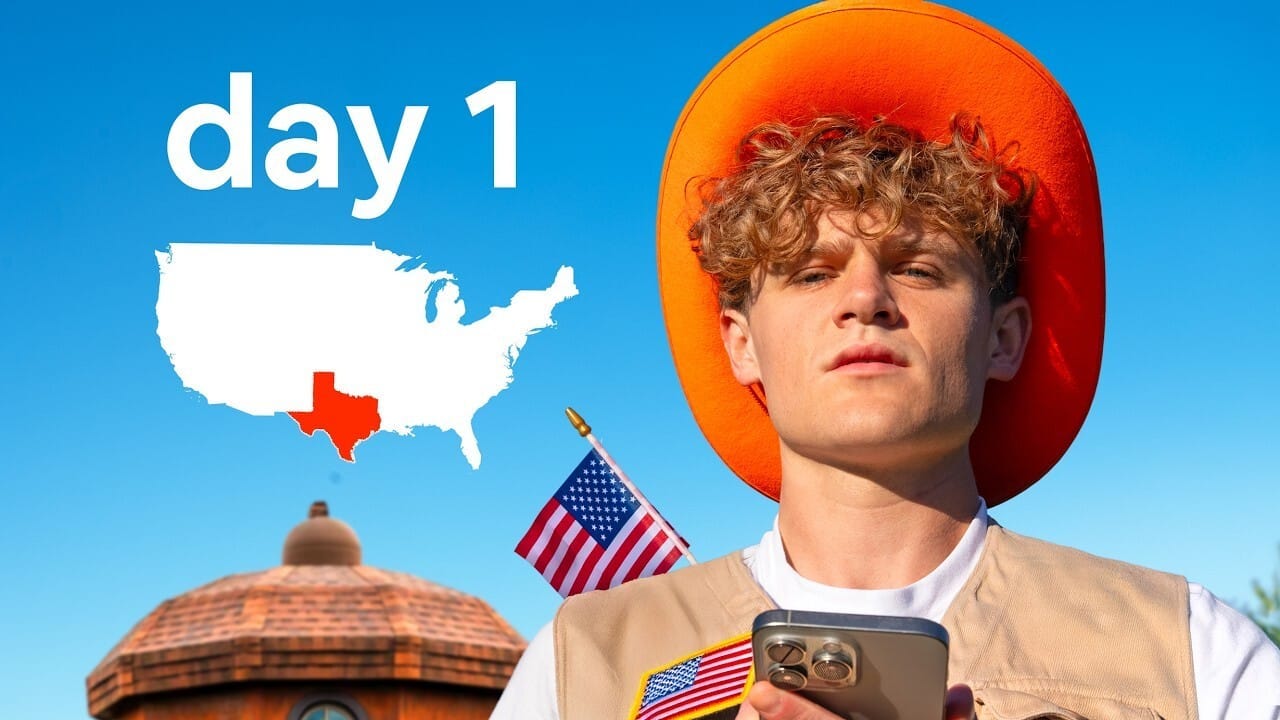
we’re breaking it all down
Quick primer for those who’ve somehow missed it in their office convos and group chats:
Ryan Trahan (21.2M subs) is quietly changing the internet — reimagining YouTube, group fundraising, and storytelling — one state at a time.
At the time of writing, he’s in the final stretch of a 50-day road trip with his wife (Haley), hitting all 50 states with two goals,
a. find the coolest Airbnb in each state
b. raise money for St. Jude Children’s Research Hospital
I’ve watched all 47 days so far — partly because I’m a superfan, but mostly because this thing is a masterclass in story structure, pacing, character development, marketing integration, and creative constraint.
And it’s unfolding daily.
Let’s break it down in the Lab 👇
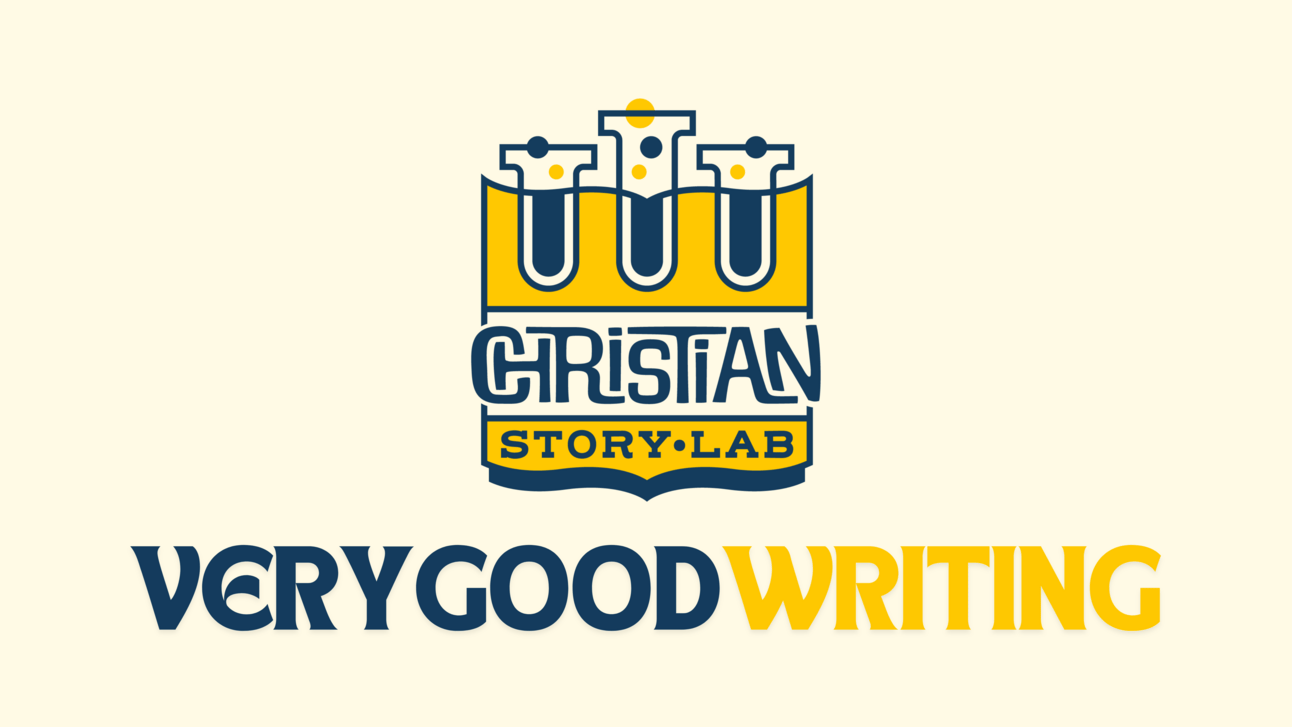
The concept for the series is simple:
📍 50 states
🛎️ 50 Airbnbs
🗓️ 50 days
🌟 Raise $1M for St. Jude (he blew past this)
😈 Every $50K donation = spin the Wheel of Doom 👇
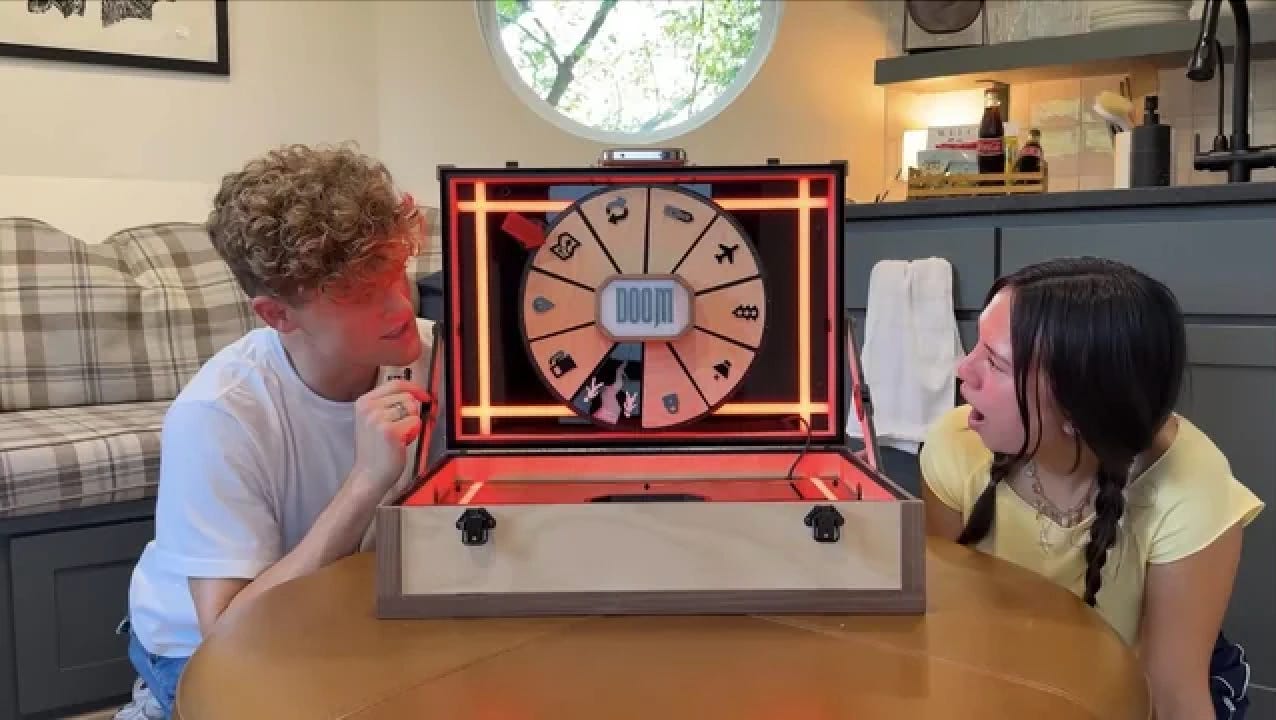
The WHEEL OF DOOM is the chaos generator
When they spin it, they might
Lose their phone (hello, paper maps)
Go 24 hrs without caffeine (ouch)
Get split from one another (THE SPLIT IS REAL)
Or worse...
🙌 Okay. You’re caught up 🙌
That’s the setup. Here’s why it’s a storytelling and marketing masterclass 👉 If a guy with a vlog camera and a minivan can raise over +$10M in 50 days, then every marketer, writer, and founder should be paying attention.
Lucky for you, I binged and took notes 📝
5 Reasons This Series Is Brilliant (and What You Can Steal)
Repetition is a feature, not a bug.
Be predictable, until you’re not.
Choose characters over concept.
Don’t be ick with promos.
Community builds a legacy around a story.
1. Repeatability = Recognizability
Each episode follows a rhythm:
Same intro: “Good morning sleepyheads…”
Same tone: vlog-style storytelling, candid shots, snack runs, awkward pauses
Same beats: Airbnb rankings, “Jammy” and “Sammy” time, road trip rituals
But you’re not watching for shock value. You’re watching for variation within the structure.
Consistency builds trust. Variation keeps it interesting.
And that’s the genius.
📅 Takeaway: Repetition is a feature, not a flaw. Use structure to anchor your story, then add new flavor each time.
The Office: Every episode begins with a cold open prank, followed by a mundane office dilemma and awkward Michael Scott leadership moment.
The Legend of Zelda: Each game starts with a young hero waking up in a peaceful village, collecting a sword, and setting off to defeat evil through a familiar cycle of temples and items.
Harry Potter: Every school year begins with the Hogwarts Express, Sorting Hat, and a new Defense Against the Dark Arts teacher.
2. Predictable...Until It’s Not
Every great story needs stakes.
But too many creators think "stakes" = car chases and explosions.
This series proves otherwise.
The Wheel of Doom adds tension without spectacle. It’s subtle. Relatable. Audience-driven.
Brands trigger it.
Viewers decide the penalties.
The randomness keeps the plot alive.
And it’s built around “grey stakes” 👉 situations that are both good and bad:
📅 Takeaway: Real tension doesn’t need drama. Let randomness, limits, and audience input carry the weight.
Among Us (Video Game): Every match begins the same, but the hidden identity of the Impostor adds unpredictable tension to every task and meeting.
Groundhog Day: The repeated day creates predictability until small character choices slowly shift the outcome, one surprising moment at a time.
3. Characters > Concepts
Ryan and Haley are not just the hosts narrating the things of their trip, but they are also the characters.
Same outfits
Same inside jokes
Same rituals (JoyRide runs, mile-a-day)
They’re consistent and evolving, which is what keeps people coming back.
Even the Wheel of Doom has a personality.
And because you care about the people, even the boring moments matter. ("We visited a potato in Idaho" is somehow riveting.)
📅 Takeaway: People follow people. Make yourself a character worth rooting for.
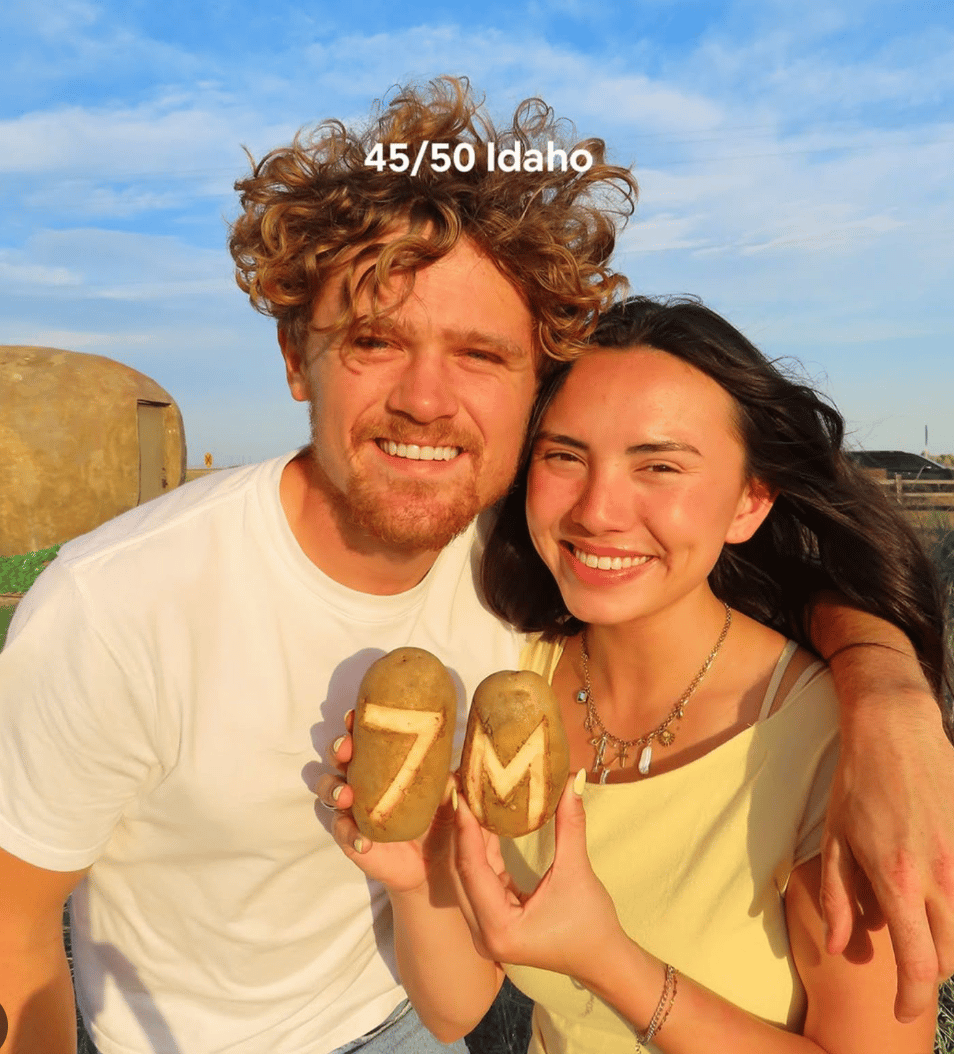
why does $7M feel like such a small number now?
4. Brand Integration Without the Ick
Let’s be clear: this entire series is an ad. And it’s delightful, which is unlike any “ad moment” you have while watching videos on YouTube (when you’re too cheap to go premium).
Because the story drives the sponsorships, not the other way around.
Dollar Shave Club paid $250K to let him keep the beard.
Lectric eBikes donates $10K every time he rides one.
Airbnb flexed a new feature by sending a private chef.
JoyRide (his candy company) appears daily, but never feels forced.
There are no “Pause for promo” moments. The brands are baked into the plot.
📅 Takeaway: Great marketing doesn’t interrupt the narrative. It is the narrative.
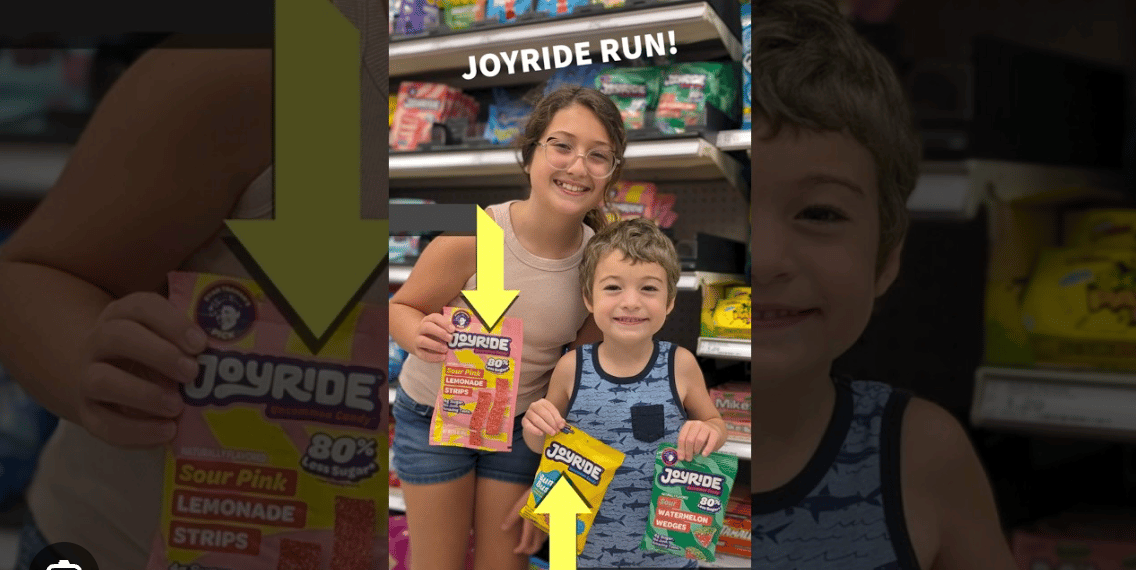
have you been on a Joyride run yet?
5. He’s Not the Only One Telling the Story
This is what puts it over the top.
The best stories aren’t solo efforts, they’re shared experiences.
Fans track donations and states like it's March Madness
Donors become plot points
Editors, sponsors, and product buyers shape the arc
Ryan might be the main character. But everyone feels like part of the story.
Minecraft: The creators built the world, but it’s the players who turned it into an infinite canvas of stories, mods, and shared adventures.
Taylor Swift’s Eras Tour: Fans don’t just attend, they dress by era, trade bracelets, decode lyrics, and turn every concert into a cultural event.
Stranger Things: The Duffers write the script, but fan theories, TikTok edits, and D&D lore expansions turn the show into a global co-authored phenomenon
📅 Takeaway: Invite your audience in. When they co-author the journey, they care a whole lot more.
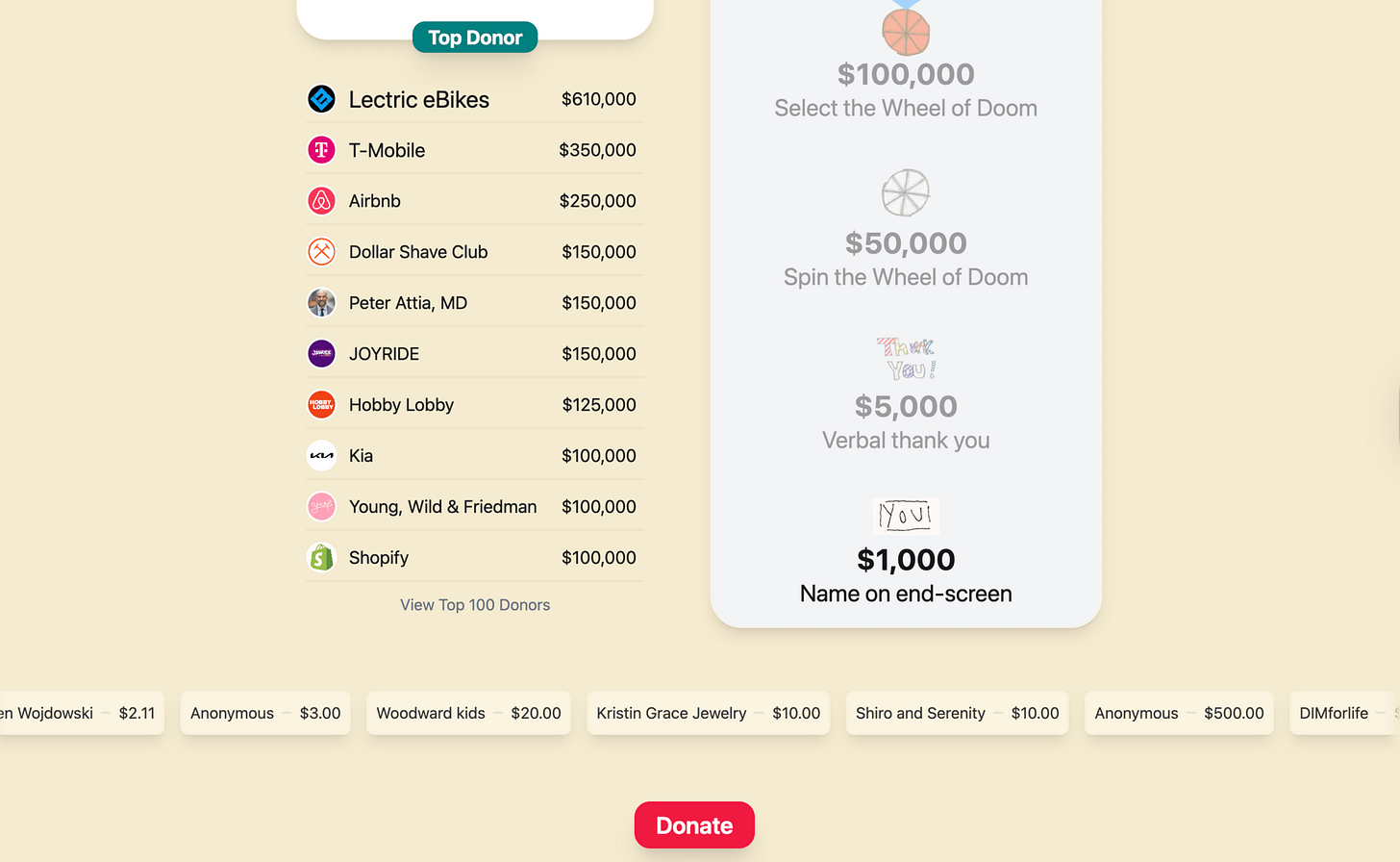
this was on Day 47
A Word to the Faith-Driven Creators
Now here’s why the mechanics of this series can matter to faith-driven creators.
Ryan Trahan has used his platform to raise over $10 million for kids with cancer, not with gimmicks and AI-garbage content, but with joy, generosity, and storytelling that draws people in. And if you watch closely, you can see the fingerprints of faith: the humility, the humor, the excellence, the desire to enjoy other humans.
That’s the kind of work we should be doing.
As Christians, we’ve been entrusted with the greatest story ever told. We’re empowered by the greatest mission ever given. And we’re equipped with the creativity of the Spirit himself.
That’s reason enough not to play small.
Storytelling is never neutral. It always points somewhere.
👉 Where is yours pointing?
MY BEST FINDS
Here are Payton’s Picks for the week. If you find something worth sharing with the rest of the Lab, reply to this email!
🧙♂️ Story
5 hooks that make people stop scrolling and pay attention (LinkedIn)
STOP trying to convince people and instead use logic using the 2+1 Formula (LinkedIn)
The best type of lead magnet isn’t content. It’s a tool. (LinkedIn)
How to get your first 1K newsletter subscribers in 30 days (step-by-step guide)
🤖 AI
A visual AI workflow builder that lets you create complex AI-powered automations using simple flowcharts (tldraw computer)
👀 ICYMI
The ONLY 5 lines you need to tell any story (Christian Story Lab)
A good reminder that the people who are “behind the publish button” have stories too. It was an honor to tell mine. (LinkedIn)
Before you go, here are 3 ways I can help:
Very Good Email Playbook: If you’re tired of writing “meh” emails, I’ll show you how to write ones people actually want to read. It’s FREE and it’s LOADED.
VeryGoodGhost Agency: I handle every aspect of content creation, from research and writing to editing and optimization, so you get scary good results.
Reply to Book a Free Call: Want to chat about your story, email strategy, or how to do this whole thing without losing your soul? Reply to this email, tell me what you’re working on, and I’ll send over a calendar link.
Keep writing what matters,
— Payton


